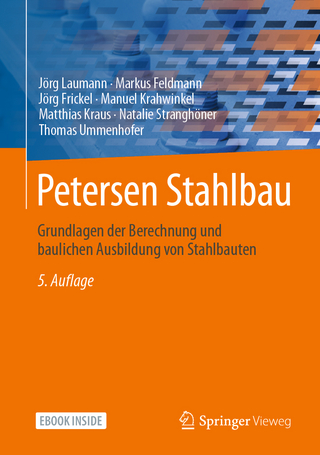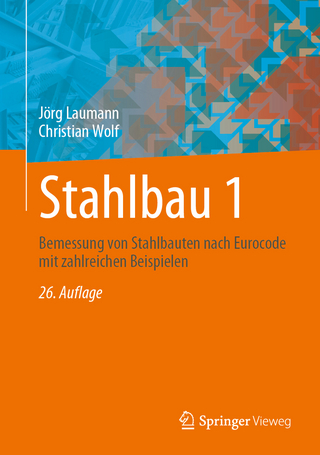
Applied Building Performance Simulation
Institution of Engineering and Technology (Verlag)
978-1-83953-165-1 (ISBN)
- Titel nicht im Sortiment
- Artikel merken
Good building performance is contingent on complex, interacting factors. The application of performance simulation tools allows practitioners to adopt a virtual prototype and test approach in selecting design solutions that balance performance and cost.
The aim of this book is to provide guidance on approaches to the modelling and simulation of energy systems in the built environment at various scales and complexities to address the myriad challenges of the clean energy transition. The intention is to equip the reader with the understanding required to compose high integrity models, commission realistic simulations, and interpret predictions to assess life cycle performance and ensure operational resilience.
Initial chapters introduce the impressive capabilities of building energy systems simulation and the new features that are likely to be added in future. The authors then describe the sustainable energy challenge and how modelling and simulation can be used to scrutinise proposals in a cost-effectively manner. The remainder of the book then covers different technology options including electrification of heating, net zero energy housing, community energy systems, active demand management, and urban energy action planning. In each case the nature of the problem is described, the construction of a high-fidelity computer model elaborated, and principal simulation outcomes demonstrated.
Some of the problem domains addressed in the book are accompanied by a high-fidelity digital model available externally. These models are compatible with the ESP-r performance simulation program, which is freely available under an open-source licence.
Applied Building Performance Simulation provides a thorough grounding and practical guidance in the role of software simulation tools for building performance, for an audience of researchers, industry professionals, advanced students, and policy makers, regulators and standards bodies operating in the field.
Joe Clarke is professor emeritus at the University of Strathclyde, UK, where he directed the Energy Systems Research Unit and BRE Centre of Excellence in Energy Utilisation. He also directed the Faculty of Engineering's Environmental Engineering BEng and Energy Systems and the Environment MSc programmes. He is the progenitor of the ESP-r building simulation program, and a founder member and past president of the International Building Performance Simulation Association. Jeremy Cockroft (PhD) was employed as a senior research fellow in the Energy Systems Research Unit at the University of Strathclyde, UK. He served as the technical meetings convener for the Chartered Institution of Building Services Engineers (Scotland) from 2012 to 2023. Dr Cockroft passed away in November 2023. Jon Hand (PhD) was employed as a senior research fellow in the Energy Systems Research Unit at the University of Strathclyde, UK, from 1989 to 2023, where he served as an engineering consultant, software developer and PassivHaus trainer. He is a major contributor to the user interface aspects of the ESP-r building simulation suite of programs. His publications have more than 3200 citations (Research Gate) and he is a prolific reviewer. Raheal McGhee (PhD) is a research fellow in the Energy Systems Research Unit at the University of Strathclyde, UK. His research involves collaborations with Local Authorities and Utilities to assess policy and technical barriers in the deployment of renewable energy schemes within cities. He is the progenitor of the GOMap feasibility assessment and urban opportunity-mapping tool.
Chapter 1: Sustainable energy systems challenge
Chapter 2: Building performance simulation
Chapter 3: Performance assessment requirements
Chapter 4: Application in practice
Chapter 5: High-resolution modelling and simulation
Chapter 6: Example applications
Chapter 7: Urban energy schemes
Chapter 8: Regional/national scale energy action
Chapter 9: Smart grids with active demand management
Chapter 10: Urban energy systems deployment
Chapter 11: Tackling the Performance gap
Chapter 12: Virtual world to reality
Chapter 13: Strategic renewables
Chapter 14: Conclusions and future perspectives
| Erscheint lt. Verlag | 1.9.2024 |
|---|---|
| Reihe/Serie | Built Environment |
| Verlagsort | Stevenage |
| Sprache | englisch |
| Maße | 156 x 234 mm |
| Themenwelt | Technik ► Bauwesen |
| Technik ► Elektrotechnik / Energietechnik | |
| ISBN-10 | 1-83953-165-7 / 1839531657 |
| ISBN-13 | 978-1-83953-165-1 / 9781839531651 |
| Zustand | Neuware |
| Haben Sie eine Frage zum Produkt? |
aus dem Bereich


